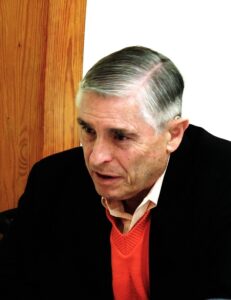Just another day at office for 100th General Assembly
Hope springs eternal is an old saying that can apply to the start of most anything new.
State Rep. Bob Pritchard, R-Sycamore, is part of the 100th Illinois General Assembly that was sworn in Wednesday, Jan. 11, and he is hopeful this group of legislators is ready for positive change. That even though leadership in the Legislature “will remain much the same as last year,” he said.
The Boone County lawmaker explained what the difference between 2016 and 2017 will bring.
“A groundswell of member support is building for a full-year budget and a break in the gridlock. In the recent [election] campaigns and during the inauguration, nearly every legislator voiced support for negotiations and a complete budget.
“Even [House] Speaker [Michael] Madigan, who has opposed any reforms to reduced costs for employers that were proposed by the governor, talked about ways to get the economy moving again during his acceptance speech.”
Pritchard is entering his seventh two-year term as a state representative in the 70th House District.
In retrospect, he said, “I have found that each General Assembly has had its unique personality, and this year is starting off no different. With the stopgap budget having ended on Saturday, Dec. 31, the state’s fiscal crisis will continue to be this year’s biggest challenge.
“I am encouraged to see bipartisan support in the Senate for a package of legislation that will address needs of our state, raise revenue to balance the budget, and offer long-term reforms that will grow the economy. I think this movement could pick up steam in the House.”
Concluding, he said, “I continue to be thankful for the opportunity to represent this area and committed to advocate for policies that will help rebuild our once-growing economy.”
Meanwhile, the Illinois School Funding Reform Commission appointed last summer by Gov. Bruce Rauner has reported progress in its goal of improving the adequacy and equity of funding to PreK-12 schools across the state.
Its recommendations are scheduled to be delivered to the General Assembly on Wednesday, Feb. 1. The drafting of legislation would follow.
Because the state is not shouldering its fair share of the cost of education, Pritchard said local property taxes have grown over the years to fill the gap.
Even so, many areas of the state don’t have enough local resources to provide the quality of education and support needed for their students.
He is one of five Republicans on that bipartisan commission, made up of legislators and experts to propose a new method for determining funding needed per school, and how to distribute whatever money the state devotes to education.
After 13 meetings, he said the commission is moving toward an evidence-based model of best practices, as shown by research for the number and needs of students.
The goal will be to set an adequacy target of money needed for each district attendance center.
For the time being, each school district will continue to receive about the same amount of state money as in the past. Discussion continues about phasing this out over time and just focusing on the adequacy target of each district.
In the future, school districts with the fewest local resources and highest property taxes should get the largest share of any new money.
Once a new funding formula is in place, a professional judgment panel will be appointed to review any new research of best practices, and adjust that formula every three to five years in response to changing needs, innovation and emerging best practices.




